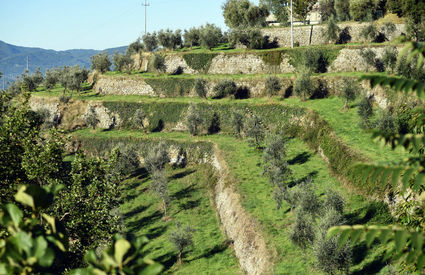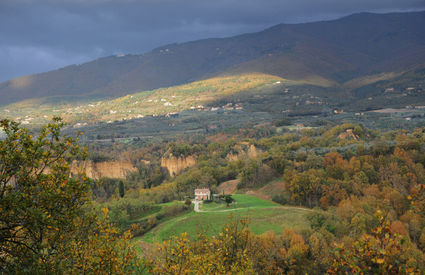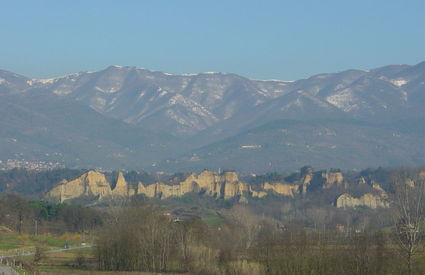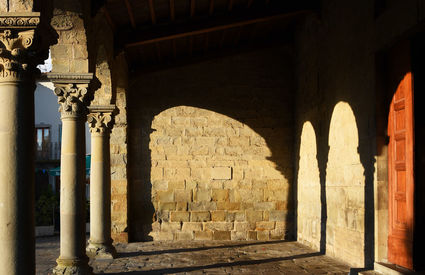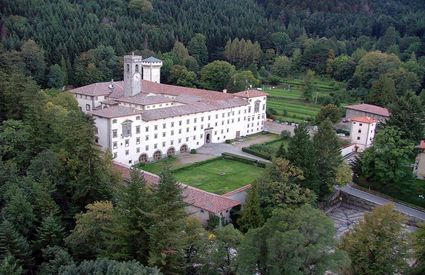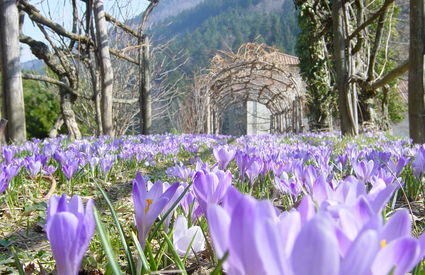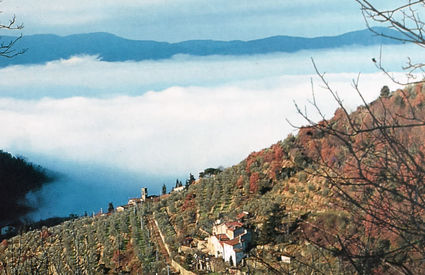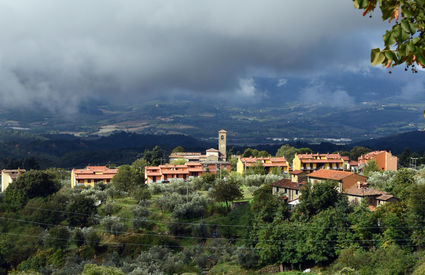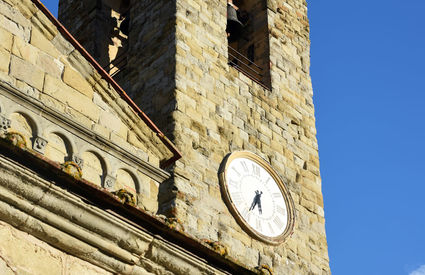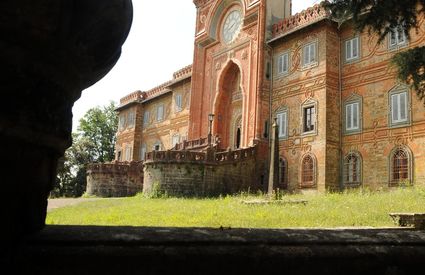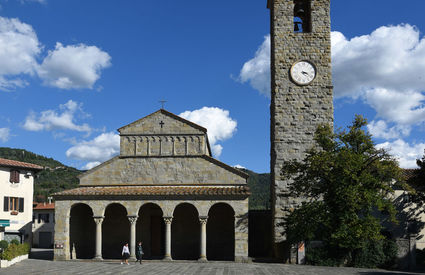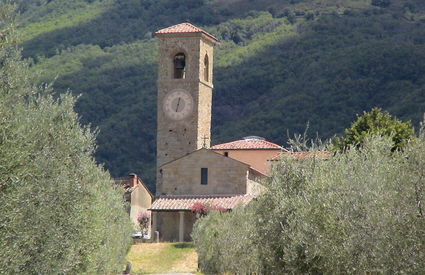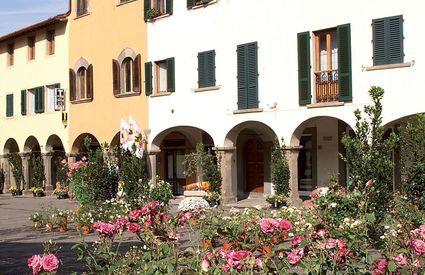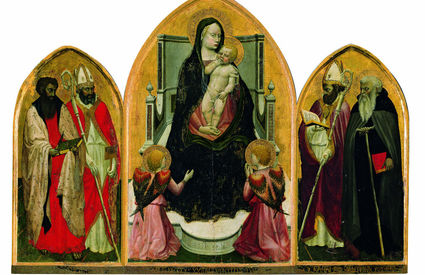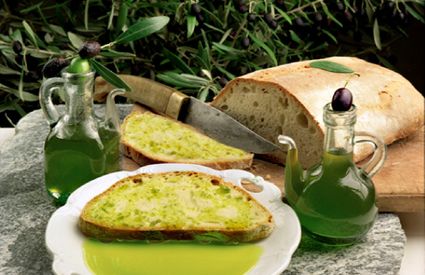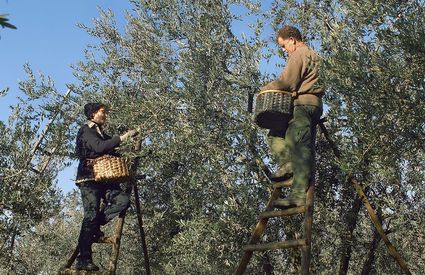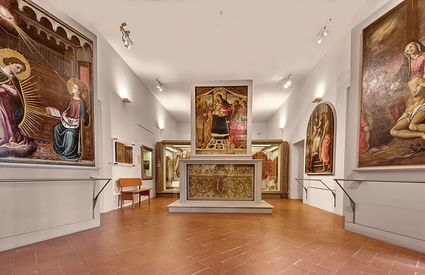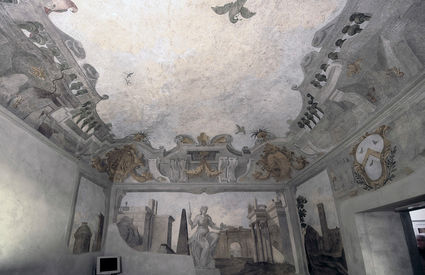Reggello
A land that’s always beginning and never ending
From the val dell’Arno up, reaching the Vallombrosa mountain, through prehistoric and olive-covered hills
A land that’s always beginning and never ending
From the val dell’Arno up, reaching the Vallombrosa mountain, through prehistoric and olive-covered hills
Up and down
Reggello is the town that’s always beginning and never ending.
If you delineate its borders on a map, it will look like a strange, mythological animal, frayed and running from Pratomagno down toward the banks of the Arno. Climbing over the pinnacles of the clayish ravines, it then flies over the silver sea of olive trees that protect the fields, fortified in dry stone walls; in the plain, rather, they stand harmonious and symmetrical.
The beauty in contrasts
The Icaro new wines from Massa Nera, with their parapente, bring out the taste of the multifaceted beauty of this land, where the harshness of the ravines of Balze mixes with the sweetness of the Cascia Plain and its stony parish church, which seems to rise up from the earth. It’s a place where the austere forest of the Vallombrosa also gives us space to contemplate, or to reflect in the makeshift chapels spread here and there throughout the forest.
A long area
Every small village, from Leccio to Pitiana, from San Donato to Tosi, from Sant’Agata to Saltino, and so on and so forth…each is a world worth discovering on its own, rich in history and art.
The names of the countess Matilde di Canossa, of Arrigo VII, of Marsilio Ficino, of Lorenzo il Magnifico, of Ghirlandaio, of Curradi, crop up from one historical place to another as often as you might see any old John Doe or Jane Smith. And all of this starts and then restarts and nothing ends, because Reggello is a long, long area, long like its beautiful square, where the ancient oil and wine streets all intersected…
Masaccio and “good oil”
Here, people still tell stories and always have something to say, like the time when scholars in Florence discovered that Madonna in the church of San Giovenale, on the via dei Setteponti, had been painted by Masaccio. Upon learning this, the Florentines wanted to keep it for themselves in the Uffizi. But let’s not kid ourselves: in Regello, they never would have handed it over, defeated—Masaccio had created this Madonna for this land, and it needed to stay here. And so today, you can admire it at the Masaccio Museum. Next, another worth looking at closely, is the Triptych of San Giovenale; you see that his saints look like the rural residents around these areas, at times sharp and severe, praying to God for the new oil and that’ll it be good like that of last year, to go on top of their beans, which are particularly delicious here.



